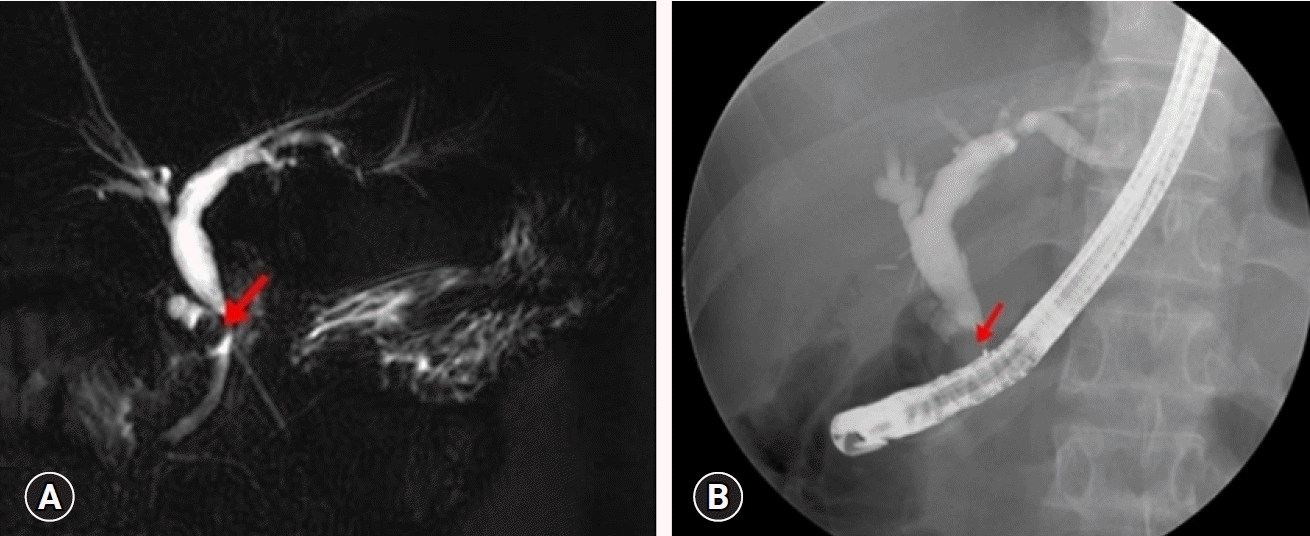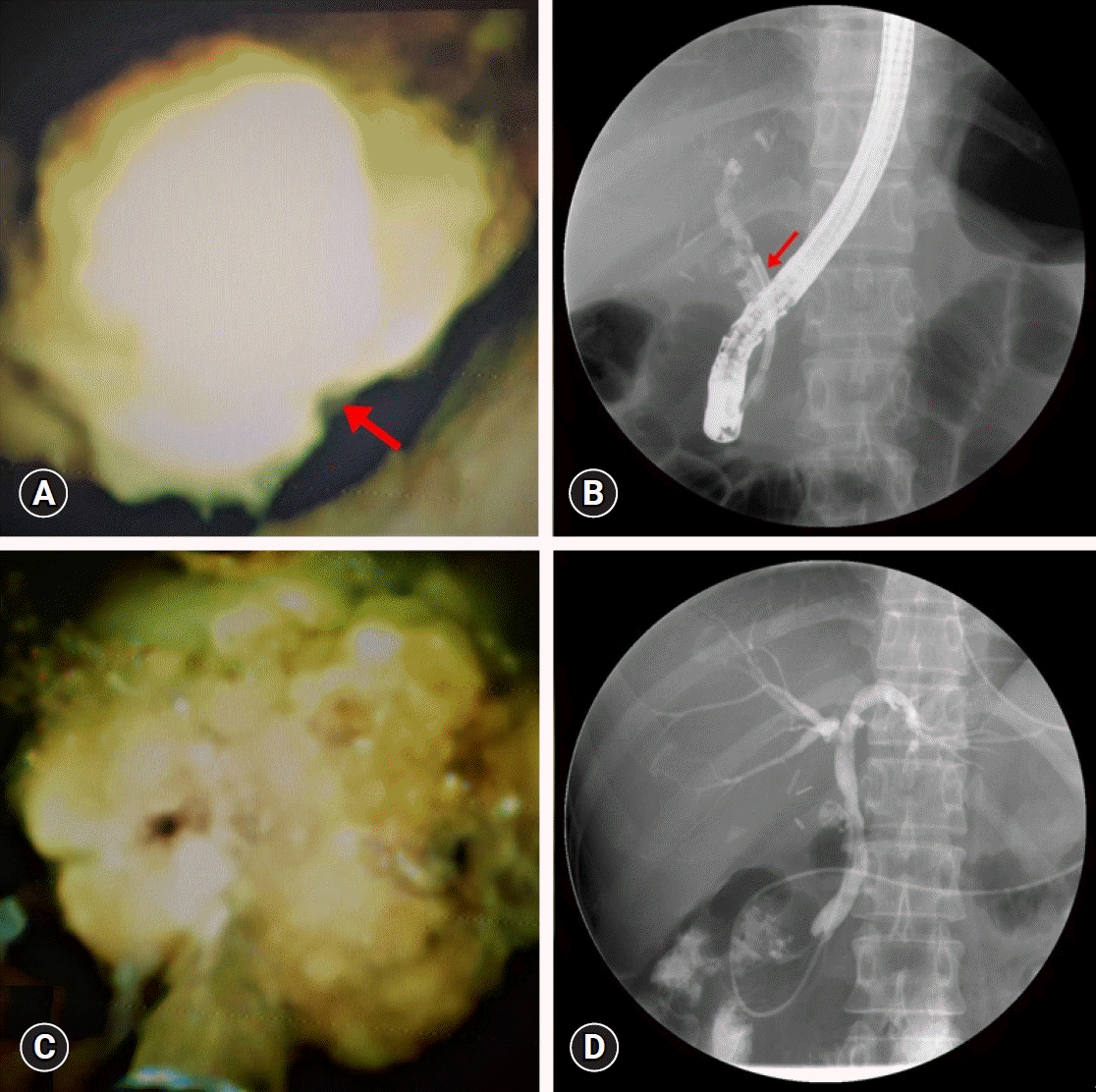1. El Nakeeb A, Ezzat H, Askar W, et al. Management of residual gallbladder and cystic duct stump stone after cholecystectomy: a retrospective study. Egyptian J Surg. 2016; 35:391–397.
2. Schofer JM. Biliary causes of postcholecystectomy syndrome. J Emerg Med. 2010; 39:406–410.
3. Walsh RM, Ponsky JL, Dumot J. Retained gallbladder/cystic duct remnant calculi as a cause of postcholecystectomy pain. Surg Endosc. 2002; 16:981–984.
4. Palanivelu C, Rangarajan M, Jategaonkar PA, et al. Laparoscopic management of remnant cystic duct calculi: a retrospective study. Ann R Coll Surg Engl. 2009; 91:25–29.
5. Mageed SA, Omar MA, Redwan AA. Remnant gallbladder and cystic duct stump stone after cholecystectomy: tertiary multicenter experience. Int Surg J. 2018; 5:3478–3483.
6. Issa H, Bseiso B, Almousa F, et al. Successful treatment of Mirizzi’s syndrome using SpyGlass guided laser lithotripsy. Gastroenterology Res. 2012; 5:162–166.
7. Shirah BH, Shirah HA, Zafar SH, et al. Clinical patterns of postcholecystectomy syndrome. Ann Hepatobiliary Pancreat Surg. 2018; 22:52–57.
8. Rieger R, Wayand W. Gallbladder remnant after laparoscopic cholecystectomy. Surg Endosc. 1995; 9:844.
9. Rozsos I, Magyarodi Z, Orban P. Cystic duct syndrome and minimally invasive surgery. Orv Hetil. 1997; 138:2397–2401.
10. Parmar AK, Khandelwal RG, Mathew MJ, et al. Laparoscopic completion cholecystectomy: a retrospective study of 40 cases. Asian J Endosc Surg. 2013; 6:96–99.
11. Kim JY, Kim KW, Ahn CS, et al. Spectrum of biliary and nonbiliary complications after laparoscopic cholecystectomy: radiologic findings. AJR Am J Roentgenol. 2008; 191:783–789.
12. Rozsos I, Magyaródi Z, Orbán P. The removal of cystic duct and gallbladder remnant by microlaparotomy. Acta Chir Hung. 1997; 36:297–298.
13. Kar A, Gulati S, Mohammed S, et al. Surgical management of cystic duct stump stone or gallbladder remnant stone. Indian J Surg. 2018; 80:284–287.
14. England RE, Martin DF. Endoscopic management of Mirizzi’s syndrome. Gut. 1997; 40:272–276.
15. Ghersi S, Fuccio L, Bassi M, et al. Current status of peroral cholangioscopy in biliary tract diseases. World J Gastrointest Endosc. 2015; 7:510–517.
16. Franzini TA, Moura RN, de Moura EG. Advances in therapeutic cholangioscopy. Gastroenterol Res Pract. 2016; 2016:5249152.
17. Seelhoff A, Schumacher B, Neuhaus H. Single operator peroral cholangioscopic guided therapy of bile duct stones. J Hepatobiliary Pancreat Sci. 2011; 18:346–349.
18. Sandha J, van Zanten SV, Sandha G. The safety and efficacy of single-operator cholangioscopy in the treatment of difficult common bile duct stones after failed conventional ERCP. J Can Assoc Gastroenterol. 2018; 1:181–190.







 PDF
PDF Citation
Citation Print
Print




 XML Download
XML Download